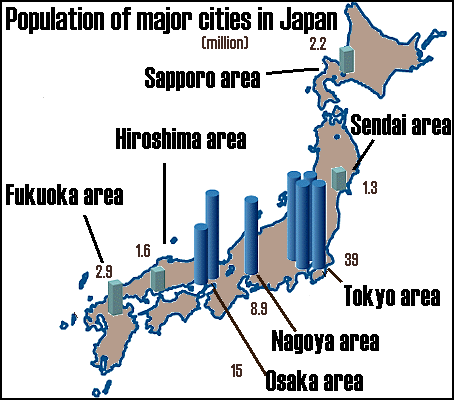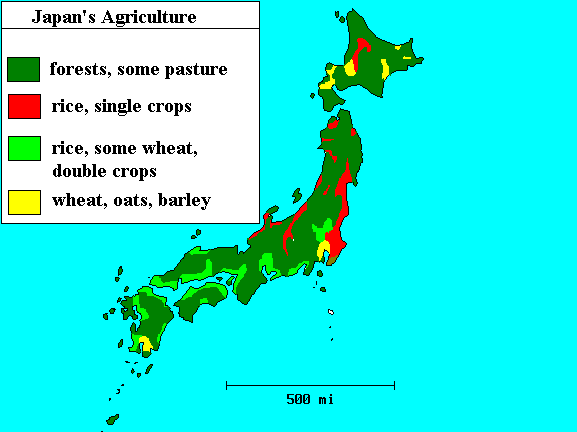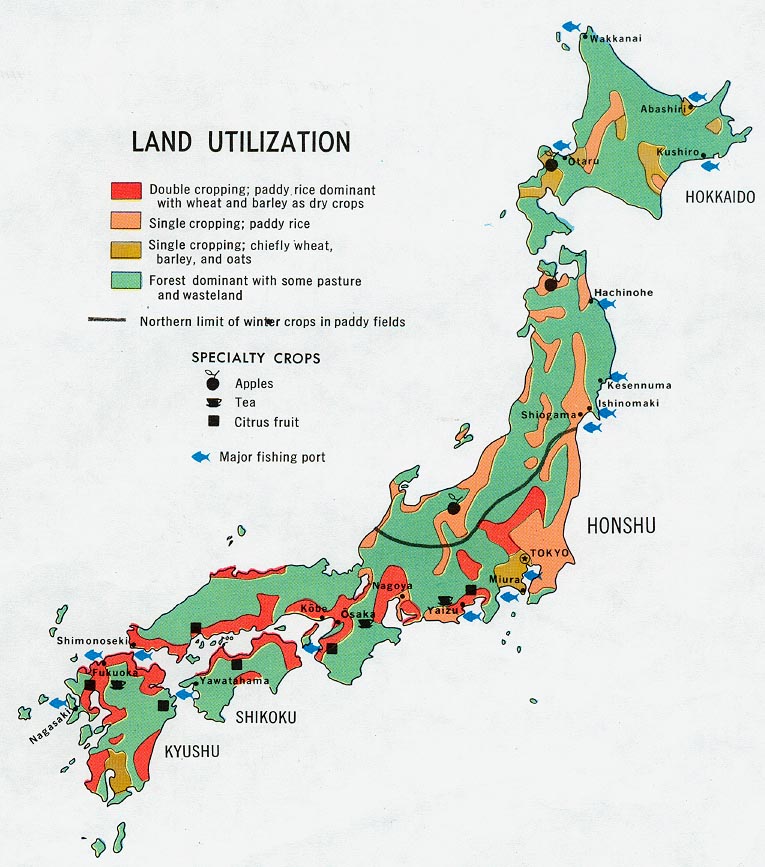JAPAN
Japan is one of the most beautiful and interesting countries in the world, which is why I am excited to present you with all of the following facts, numbers, and maps that will provide you informative geographic knowledge about Japan.
#1 Thematic Maps
 A thematic map is a map designed to portray a particular theme in a country or geographic area. They display important data researches have gathered about the topic for the map.
A thematic map is a map designed to portray a particular theme in a country or geographic area. They display important data researches have gathered about the topic for the map."Thematic maps can cover a variety of characteristics from soil types to population density." cartographers can create any kind of map they want to reflect there theme and really show its idea.
Ive chosen Japan as my country to get thematic maps of.
Here's my three:
Map #1 is a population map of japan and shows dots of different shades of red to give the number of people in major cities

Map #2 is a minerals map that shows the extraction and the processing of minerals with different colored dots placed throughout japan

Map #3 is a land utilization map. basically showing the different amounts of cropping different areas of japan have. Like for example, the red parts mean thats the area that does double cropping, and is paddy rice dominant. It also gives you specialty crops listed and pasted sporadically on the map.
#2 Population Statistics

Population: 127.3 million
life expectancy: 83.10 years
fertility rate: 1.41 births per woman
population growth rate: -0.2% annual change
GNI per capita: 37,790 PPP dollars
Major Cities Population: Tokyo-13.35 million, Osaka- 11.49 million, Nagoya- 3.32 million
Birth Rate: 8.07 births/1,000 population
Death Rate: 9.38 deaths/1,000 population
Urbanization population: 91.3% of total population
Infant mortality rate: 2.13 deaths/1,000 live births
Life expectancy at birth: 84.46 years
HIV/AIDS- adult prevalence rate: less than 0.1%
HIV/AIDS- deaths: fewer than 100
Obesity- adult prevalence rate: 5%
Literacy: anyone over 15 can write, 99%
For anyone wishing to travel to japan (which i suggest you do because it's my favorite country in the world) you should know that it is one of the most healthiest countries with one of the highest life expectancy in the world. Drinking and Smoking are two of the only couple of health problems Japan has.
#3 Ethnicities/ Religion
- Ethnic Japanese make up about 98.5% of the population, the rest is made up of small percentages of Chinese, Korean, and other. There are never really any ethnic conflicts between the few other ethnic groups in this country. Japan is very welcoming to other ethnic groups
2. Describe the religious landscape of your country or region. What are the main religion? Are there any religious conflicts or issues?
3. Describe the political situation of your country or region. Describe the form of government there?
- Japan is a constitutional monarchy in which the power of the Emperor is limited and is relegated primarily to ceremonial duties. The Government is divided into three branches: the Executive branch, the Legislative branch and the Judicial branch. The Emperor is its head of state and his role is ceremonial and he has no powers related to Government. Instead, it is the Cabinet, composing of the Ministers of State and the Prime Minister, that directs and controls the Government.
#4 Agriculture/Manufacturing
Farming, forestry and fishing are the three things that basically take up all of Japans agriculture. These form the primary sector of industry of the Japanese economy.They account for only 1.3% of gross national product because only 20% of Japan's land is suitable for cultivation. These three things are so big for this country because back in the day they were responsible for 80% of employed citizens. Almost one-third of all agricultural output in the country is generated by urban agriculture.
Japan has one of the world's highest levels of crop yields per unit area, with an overall agricultural self-sufficiency rate of about 50% on fewer than 56,000 km² (14 million acres) cultivated.
Agriculture’s contribution to Japan’s economy is kind of small when compared to Industry and Services though.Only 15 percent of Japanese land is suitable for agriculture.
 Japans manufacturing products are mostly electronics and cars, with it being the worlds largest manufacturer of electronics and being well known for their popular Toyota and Lexus cars. Major industries in Japan include motor vehicles, electronic equipment, machine tools, steel and nonferrous metals, ships, chemicals, textiles, and processed foods. Japan is also known for their fishing industries and their paper and cellulose industry. The important Okhotsk fisheries had a value of ¥50 million. Offshore fishing by medium-sized boats makes up for more than half the total production in the fishery industry.
Japans manufacturing products are mostly electronics and cars, with it being the worlds largest manufacturer of electronics and being well known for their popular Toyota and Lexus cars. Major industries in Japan include motor vehicles, electronic equipment, machine tools, steel and nonferrous metals, ships, chemicals, textiles, and processed foods. Japan is also known for their fishing industries and their paper and cellulose industry. The important Okhotsk fisheries had a value of ¥50 million. Offshore fishing by medium-sized boats makes up for more than half the total production in the fishery industry.
Japan offers many industries and services that are all known to be impeccable, with all of them continuing to grow stronger and contribute very fairly to the countries economy minimizing any challenges the citizens may face.





No comments:
Post a Comment